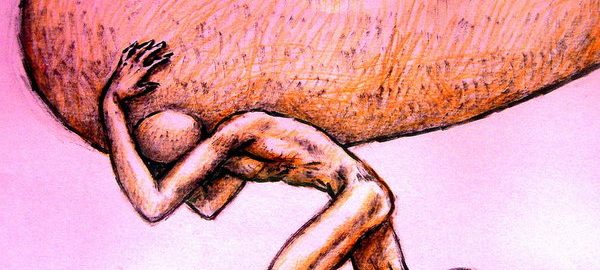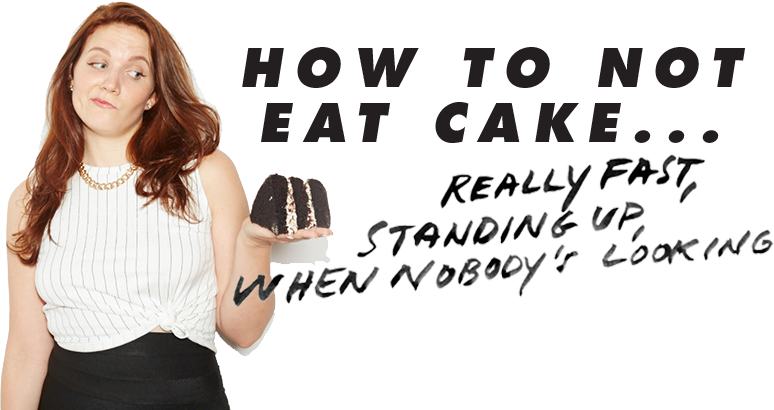
Intro to Body Image Work:
Let’s be clear,
poor body image is not yet another thing you’re “doing wrong,” but is a natural reaction to oppression, and the distribution of social power on the basis of size.
As a result, managing this situation starts with re-framing the problem itself
from—
“What am I doing wrong that I can’t ‘get over’ this poor-body-image thing? (or can’t lose weight, can’t ‘eat right,’ etc.)”
to—
“How am I or others treated unequally, or granted social rewards or punishments, on the basis of size? How does living in a ‘thin-is-best’ culture affect me emotionally, physically, or otherwise? What are my options for responding to these forms of oppression when they come up around me, or affect my own thinking?”
When we re-frame the problem from “us” being the problem, to diet-culture being the problem, the solution starts to look very different.
For starters, this re-frame helps us understand that:
positive body image is not a singular goal to achieve, but rather, is an ongoing process of managing oppression, and developing the mental and emotional skills required to reject size-based prejudice—both towards ourselves and others—whenever we encounter it.
On that note, there are two core forms of oppression we must learn to resist to liberate ourselves from body-shame.
#1 — Oppression in our External Environment. It’s important to recognize that oppression starts outside ourselves, with weight-biased messages from media, authority figures, personal influencers, etc. and is reinforced all throughout our external and social infrastructure (e.g. our health system, the fashion industry, basic engineering of living spaces, cars, planes, etc.)
Managing oppression in our external environment starts with developing consciousness around where society’s expectation of thinness legitimately affects your life, and starting to advocate for yourself and others in these areas.
More specific things you can do right away? Be conscious of the messages you’re consuming (on social media, press media, toxic friendships, etc.) and begin to identify and eliminate/reject fatphobic or weight-biased messaging wherever is possible (including “love-yourself-to-lose-weight” narratives—which appropriate body-positive messaging for diet-industry gain).
Additionally, make sure to INSERT body-positive messages wherever you can, and ideally, expose yourself to as many body-diverse photos/images as often as you can. While someone telling you “just love yourself!” might not do the trick, regularly looking at pictures of someone your size or bigger who DOES love themselves (or is at least willing to make themselves visible to you and others), will eventually start to affect your perception of bodies. It’s science. More on this here.
#2 — Internalized Oppression—e.g. negative self-talk & personal beliefs. Internalized oppression is a symptom of external oppression, or is the internalization of diet-culture narratives and beliefs. In other words, if I’m repeatedly told that my body isn’t good enough the way it is, I will eventually start to believe it. Internalized oppression is the brainwashing that occurs as a result of environmental oppression (e.g. advertisements, media, body-shaming, food-shaming, etc.)
Internalized oppression is why the diet-industry is so profitable, and has grown so rapidly over the past several decades—it is essentially, our commitment to pleasing our oppressors; our agreement that we are not good enough the way we are; our belief that we must tirelessly work to achieve thinness, or perform “correct eating” or else.
Battling internalized oppression requires similar skills to battling external oppression—that is, the constant identification and rejection of fatphobic messages and ideas, even when they pop up from within our minds.
That being said, combatting internalized oppression comes with it’s own unique challenges in that—by definition— we don’t always see fatphobic messages as oppression, but rather believe these narratives to be fundamental truth. Challenging these messages (that is, coming up with the counter-arguments to these messages) is where the help of a trained professional or trusted advocate can be helpful, specifically someone with education in size justice issues.
In conclusion, it’s not just one thing that people do that changes their body image over time, but rather, it’s a whole collection of things (on-going challenging of thought patterns, regular exposure to body-positive ideas, images, media, etc.), most of which have to be repeated over and over again or we fall back into the paradigm of the normative culture. When you realize that the default setting on your external environment is designed to create body-dissatisfaction, it becomes clear that positive body image is not a thing to achieve, but is a muscle to develop and strengthen in the midst of an oppressive culture.
Want more stuff like this? Check out the Stop Fighting Food Free Video Training Series here.
Want to go EVEN DEEPER? Get in on my flagship coaching program, the Stop Fighting Food MASTER CLASS.
*Art Image: The Weight of Oppression by Paulo Zerbato


